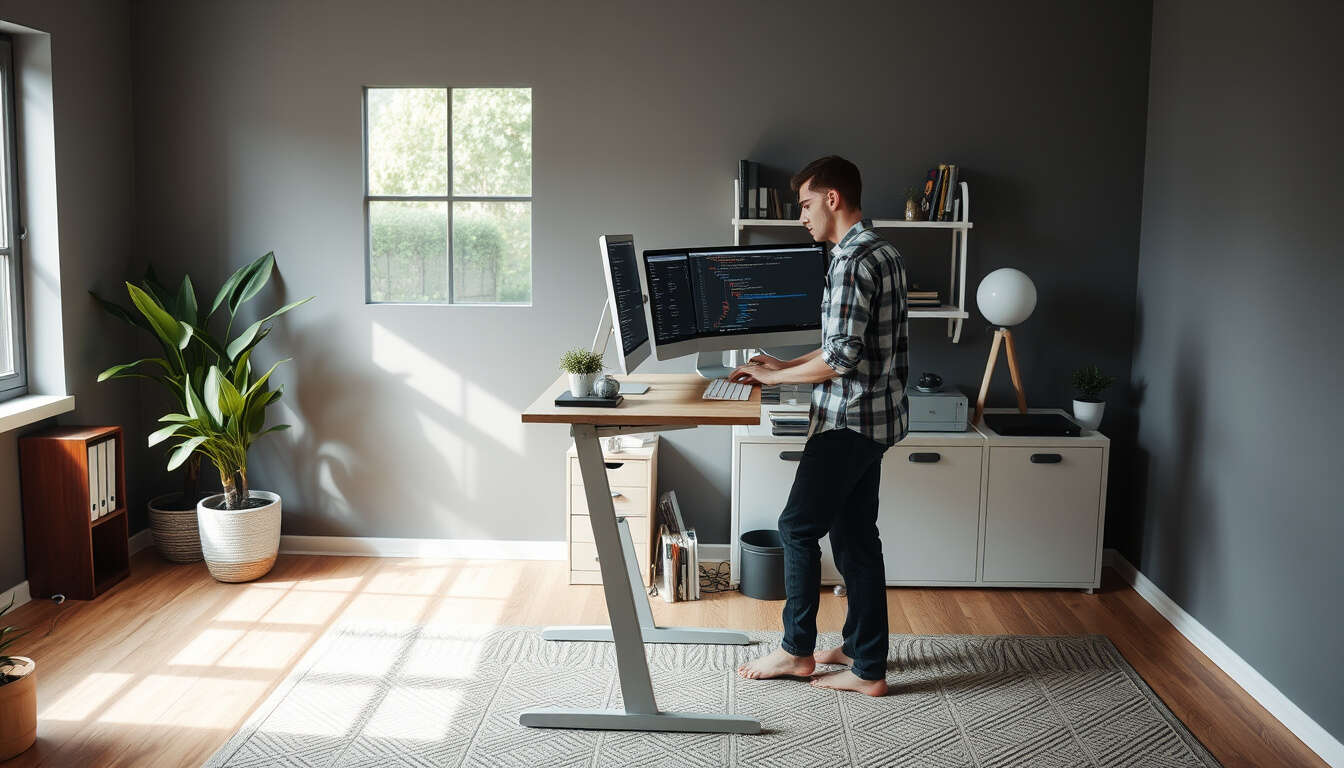Advantages of Standing Desks for Developers
 by Shanie Goodwin
by Shanie Goodwin
Standing desks offer key benefits for developers, including better posture and reduced back pain from long hours at the computer. By encouraging movement and improving ergonomics, they support overall physical health and help prevent common issues like fatigue and discomfort.

Maintaining good health as a developer involves paying attention to daily habits that affect both body and mind. One practical tool gaining attention is the standing desk, which addresses physical challenges from extended sitting during work hours. This approach focuses on ergonomics and posture, essential for those spending hours in front of screens.
First, standing desks help improve posture by allowing users to alternate between sitting and standing. Poor posture often leads to strain in the neck, shoulders, and back, which can accumulate over time. For developers, this means less discomfort during coding sessions. Studies from sources like the American Journal of Preventive Medicine indicate that standing more can reduce the risk of musculoskeletal problems. A developer might notice immediate relief from hunching over a keyboard, leading to a more comfortable workday.
Another advantage is the promotion of better blood circulation. Sitting for long periods can slow down blood flow, potentially causing fatigue and even contributing to conditions like varicose veins. With a standing desk, developers can stay more active, which supports energy levels throughout the day. This ties into overall physical health, as regular movement helps combat the sedentary nature of programming roles.
Beyond physical benefits, standing desks can play a role in preventing burnout. By reducing physical strain, they allow for clearer focus and fewer breaks needed for stretching or pain relief. This contributes to work-life balance, as developers feel more energized after work to engage in personal activities like exercise or family time. Real-life examples show that many in the field report higher productivity when they incorporate standing into their routine. For instance, a survey by ergonomic experts found that workers using adjustable desks experienced less end-of-day exhaustion.
Nutrition and exercise also intersect with standing desk use. Standing naturally encourages more movement, which can complement healthy eating habits by boosting metabolism. Developers aiming for better health might pair this with simple routines, such as walking during calls or choosing nutrient-rich snacks to sustain energy.
Sleep hygiene benefits indirectly too, as reduced physical discomfort can lead to better rest at night. The psychological impact of remote work, often involving isolation and long hours, can be eased by small changes like using a standing desk. This fosters a sense of control over one's environment, helping to manage stress more effectively.
To make the most of a standing desk, start with gradual adjustments. Begin by standing for short periods and build up, while ensuring the desk height suits your body to avoid new strains. Combine this with other healthy practices, such as regular breaks for light exercise or mindfulness techniques to support mental well-being.
In summary, standing desks provide clear advantages for developers by enhancing posture, circulation, and overall energy. These changes not only support physical health but also contribute to a more sustainable professional life, encouraging a balanced approach to work and well-being.
